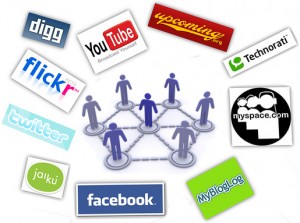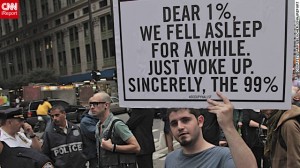 Thanks for the proliferation of smart phones, which give access to the Internet and access to social media in a mobile format, it is very easy for anyone or any group to create a protest at a large level. We’ve seen it done in Egypt and in other parts of the world. Today, we’re witnessing it in the United States with the Occupy Wall Street movement. Getting a large number of people in multiple locations to gather at a specific time and place is not hard to do. And frankly, it will be easier to do as time goes on.
Thanks for the proliferation of smart phones, which give access to the Internet and access to social media in a mobile format, it is very easy for anyone or any group to create a protest at a large level. We’ve seen it done in Egypt and in other parts of the world. Today, we’re witnessing it in the United States with the Occupy Wall Street movement. Getting a large number of people in multiple locations to gather at a specific time and place is not hard to do. And frankly, it will be easier to do as time goes on.
In the case of the Wall Street Protests, I’ve seen several interviews of spokespeople for the protestors. When they’re asked, “What are you protesting?” they reply, “What we’re trying to do is to create dialogue and communication with Wall Street.” Invariably, the interviewer then asks, “A dialogue about what?” To which the protesters reply, “We’re just trying to create communication and dialogue.”
Confusing? Not really.
Remember, communication and dialogue are important aspects of social media. Yet they are not important aspects of corporate America. I’ve surveyed close to a million executives and top-level people from virtually every industry, and I’ve asked them, “Are you better at informing or communicating?” By far, they say that they’re better at informing. In other words, we’re masters of the information age, but we’re not masters of the communication age. And social media is part of the communication age.
Corporations don’t quite get that yet. They’re still operating in the information age. But remember, informing is one way. It’s static and does not create dialogue. In contrast, communicating is two-way. It’s dynamic and creates dialogue.
 Social media is about dialogue. It’s about two-way communication. Business and government, regardless of whether it’s a power company or a telecom company, whether it’s a local or state government, are focused on informing. They’re not even thinking about communicating.
Social media is about dialogue. It’s about two-way communication. Business and government, regardless of whether it’s a power company or a telecom company, whether it’s a local or state government, are focused on informing. They’re not even thinking about communicating.
So when the protestors say, “We want to create dialogue and communication,” they’re really saying that they’re upset that there’s no dialogue and communication in corporate America. That’s what they are protesting.
Yes, their protest is a little vague in the eyes of business. Corporate America simply doesn’t get it.
What we’re witnessing is actually the beginning of something I forecasted in my 1993 book, TechnoTrends, where I talked about how we would be shifting from the information age to the communication age. I brought the topic up again in my newest book, Flash Foresight. But instead of making it a long-range forecast, like I did with TechnoTrends, I said, “We’re here. It’s now. It’s already happening.”
The problem is, business and government are not prepared to deal with communication and dialogue; they’re information-based. Now do you see the disconnect?
People—young and old alike—are using social media; they’re communicating; they’re having dialogue. Business and government is still informing. And until Corporate America embraces and implements dialogue and communication, we’re going to see more and more disconnect and more and more and protests—from large Occupy Wall Street movements to smaller acts, such as people closing accounts and doing business elsewhere.
Ultimately, the upheavals we’re seeing are really about communication age versus information age—social media versus corporate culture and informing. And only when everyone addresses this issue can we move forward with any real progress.






Comments